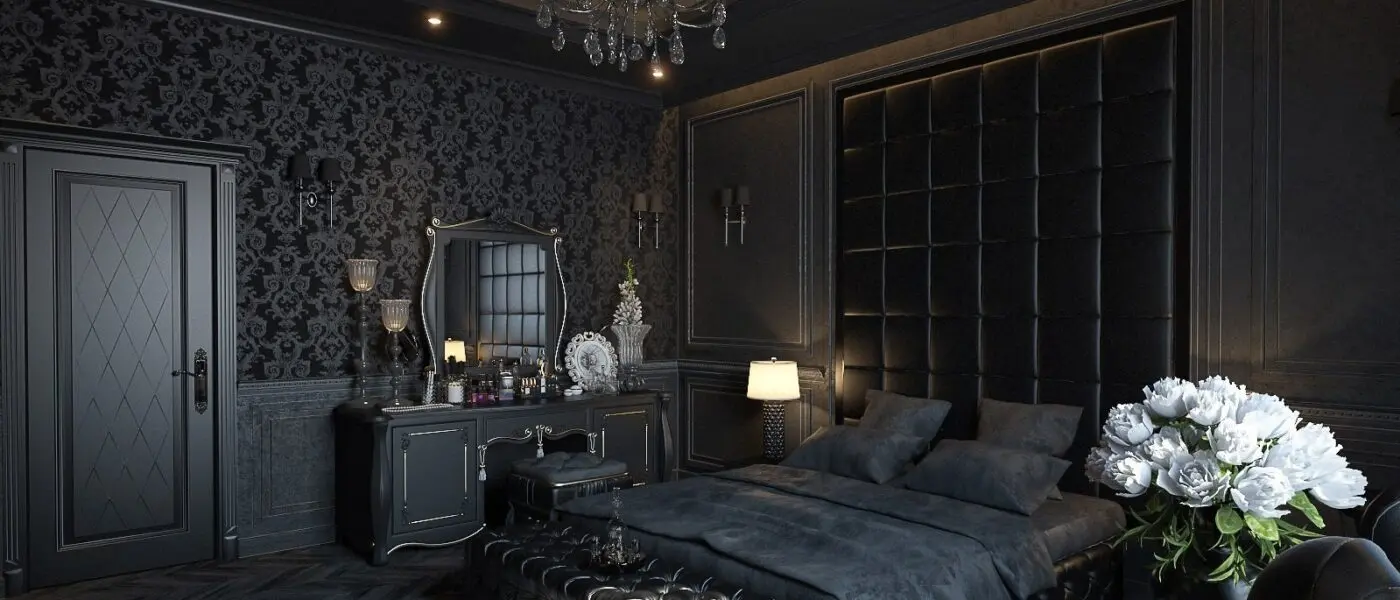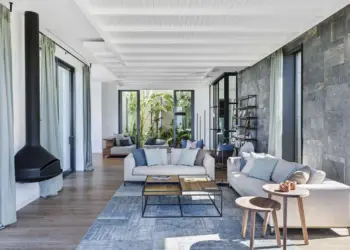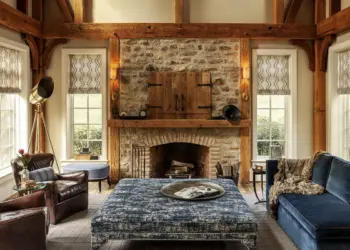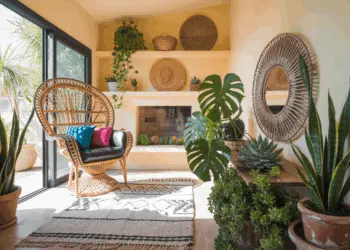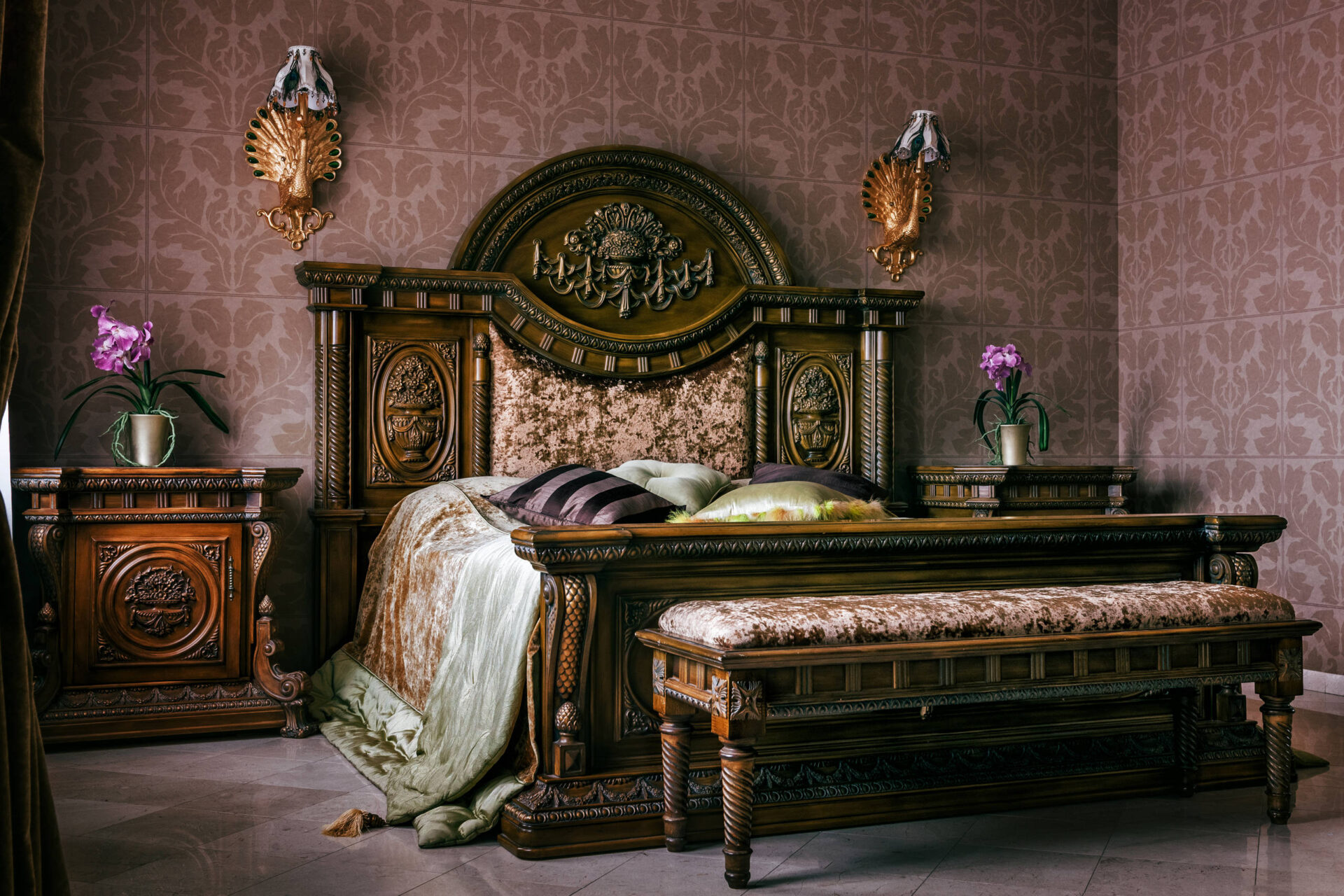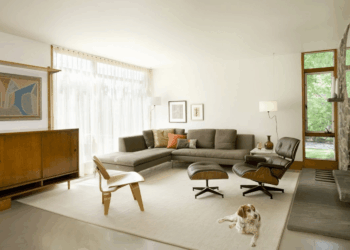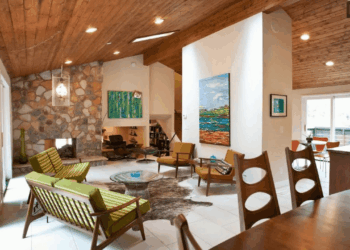Welcome, fellow aficionados of the extraordinary! Today, we’re delving into the mystifying realm of modern gothic interior design, a darkly romantic and utterly captivating aesthetic that effortlessly marries the medieval with the contemporary. Imagine the opulence of classic Gothic architecture meeting the sleek lines of the 21st century-it’s a match made in design heaven!
So, buckle up as we embark on a journey through the shadowy corridors and decadent chambers of modern gothic interiors. From brooding color palettes to intricate detailing, this style is all about creating an atmosphere that’s both mysterious and sophisticated. Let’s unravel the secrets and unveil the allure of modern gothic interiors: All You Need To Know!
Table of Contents
The Historical Tapestry of Gothic Aesthetic
Origins in the Medieval Period
The Gothic style traces its roots to the medieval period, with cathedrals and churches showcasing pointed arches, ribbed vaults, and flying buttresses. The craftsmanship and intricate details of Gothic buildings inspired a revival in the 1740s, particularly in England.
Victorian Era Revival
Wealthy aristocrats, enamored with the neo-Gothic style, designed their homes with inspiration from medieval aesthetics. The revival extended to architecture, with notable works like Westminster Palace.
Contemporary Interpretations
Modern Gothic interior design need not be overly dark. Contrasting darker elements with light, modern pieces can evoke a fashionable, neo-Gothic feel. Natural light can also be harnessed to make the space elegant yet welcoming.
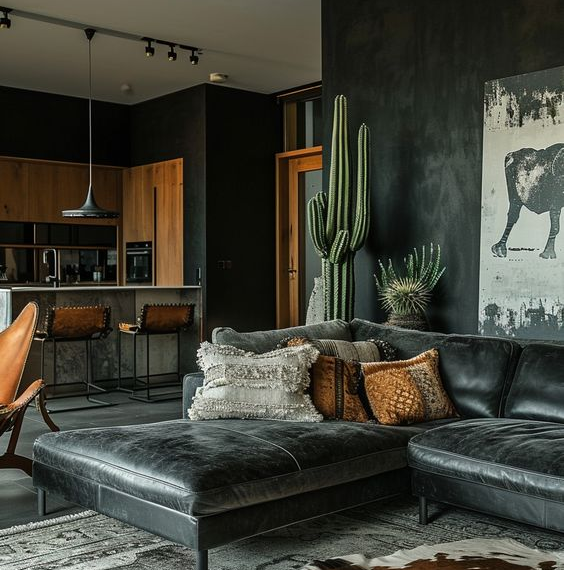
The Enchanting Palette
1. Midnight Hues and Beyond
Modern gothic interior design hinges on a color palette that’s as rich as a medieval tapestry. Deep, brooding colors dominate, with a penchant for black, burgundy, deep purples, and navy blues. These hues, when strategically layered, create a dramatic and immersive ambiance, reminiscent of a moonlit medieval castle.
2. Pops of Luxury
While darkness prevails, don’t shy away from infusing a touch of opulence with gold or silver accents. Think ornate candelabras, gilded frames, or metallic trim on furniture. These luxurious touches add depth and a sense of royalty to the space without compromising its gothic allure.
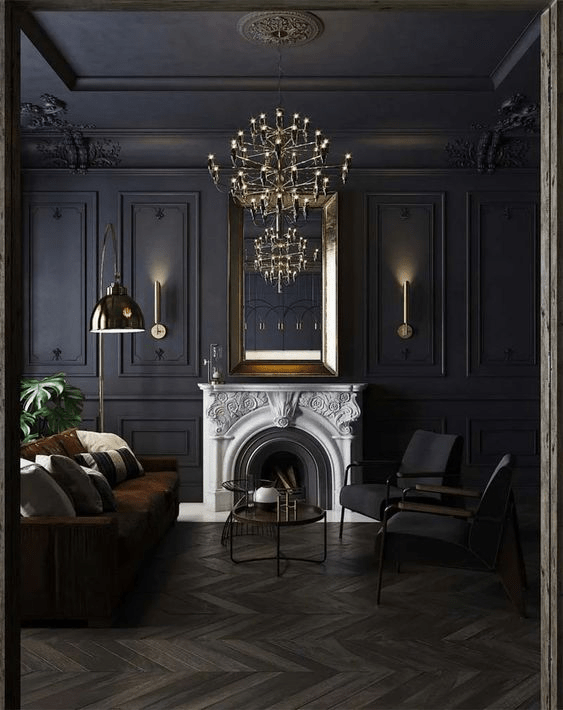
Furniture and Décor: The Gothic Touch
3. Eccentric Furnishings
When it comes to furniture in a modern gothic interior, think bold, ornate, and slightly ominous. Sturdy, antique-looking furniture with intricate carvings and dark wood finishes is the way to go. Coffin-shaped coffee tables and claw-footed chairs might sound dramatic, but in this style, they’re the epitome of chic!
4. Gothic-Inspired Art
Adorn your walls with art that captures the essence of the gothic era. Think haunting portraits, tapestries with medieval motifs, or modern artwork that resonates with the dark beauty of this style. These pieces not only complement the overall aesthetic but also serve as conversation starters!
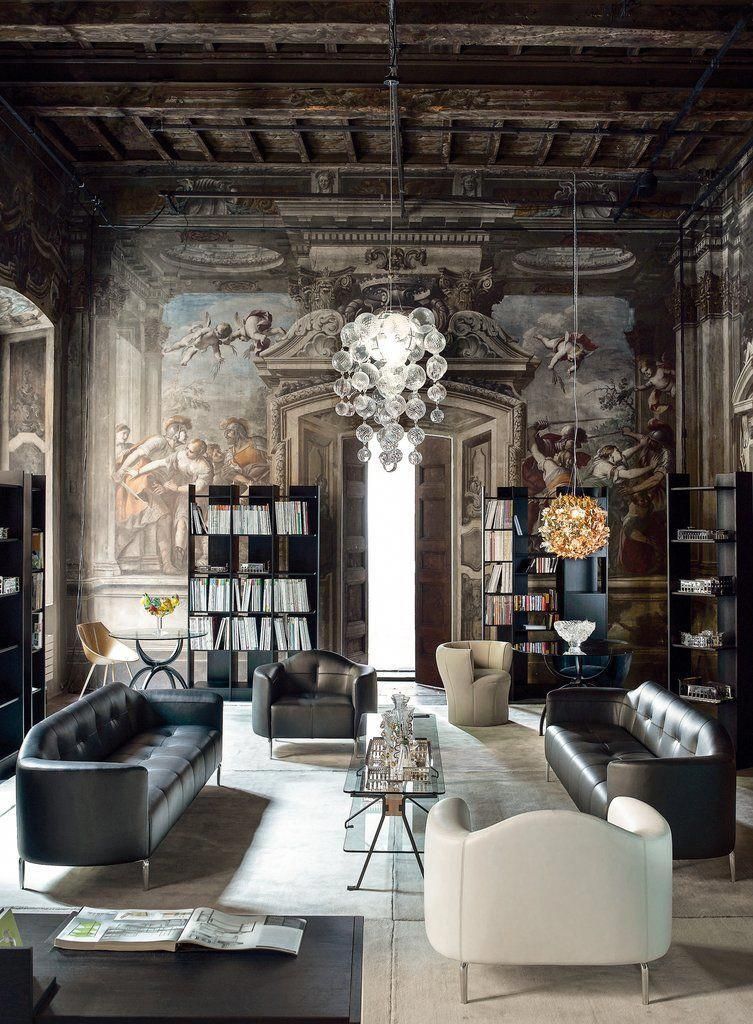
Lighting: Casting Shadows and Elegance
5. Chandeliers in the Dark
Illuminate your modern gothic interior with striking, statement chandeliers. Opt for designs that echo the grandeur of medieval castles-crystal chandeliers with a modern twist or wrought iron fixtures exuding a sense of mystery. Let the lighting be both functional and a dramatic focal point!
6. Candlelit Corners
Enhance the ambiance with an abundance of candles. Candle sconces, candelabras, and pillar candles on darkened mantelpieces-all contribute to the atmospheric glow that’s quintessential to modern gothic interiors. It’s not just lighting; it’s a performance of shadows and mystique!
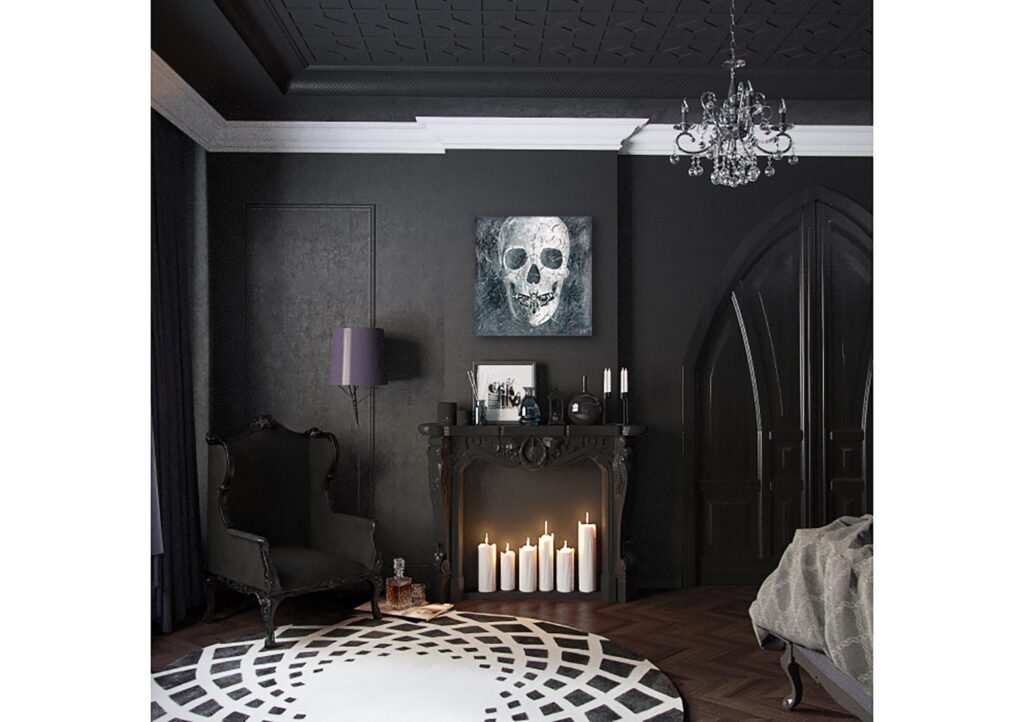
Materials and Textures: A Tactile Experience
7. Velvet and Lace
When it comes to fabrics, embrace the tactile luxury of velvet and lace. Think upholstered velvet sofas type, heavy velvet drapes, and lace accents that add a touch of romance. These textures not only feel decadent but also visually enhance the opulence of your modern gothic haven.
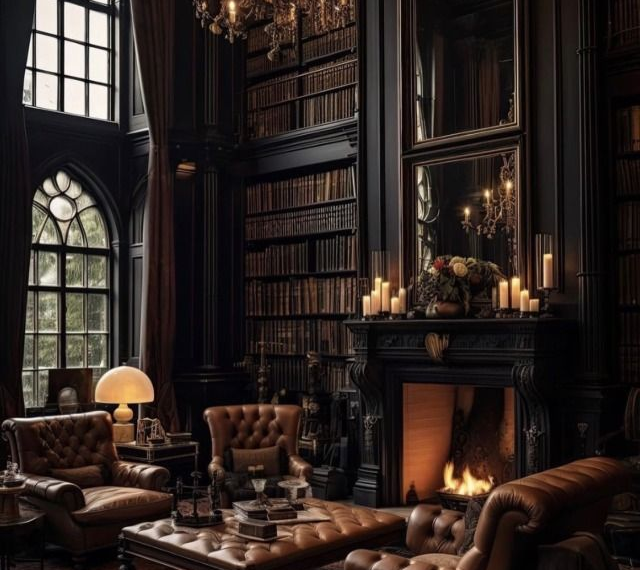
8. Stone and Metal
Incorporate stone accents and metallic finishes to infuse an authentic medieval vibe. Whether it’s a stone fireplace, wrought iron railing, or metal-framed mirrors, these elements ground the space in history while maintaining a contemporary edge.
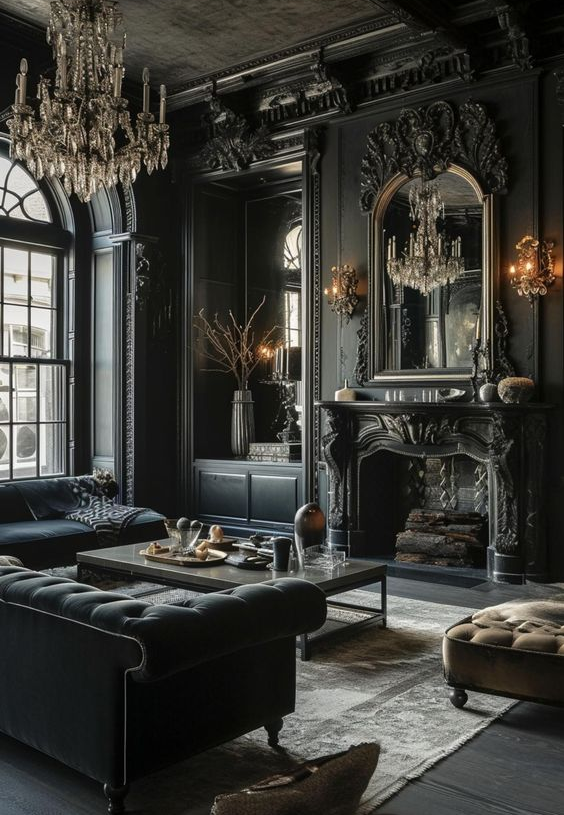
Crafting Your Gothic Haven: Practical Tips
9. Walls: The Canvas of Elegance
Wallpaper is a central element in Gothic interiors, with monochromatic colors and intricate designs. Consider using an accent wall with darker wallpaper to balance the overall aesthetic.
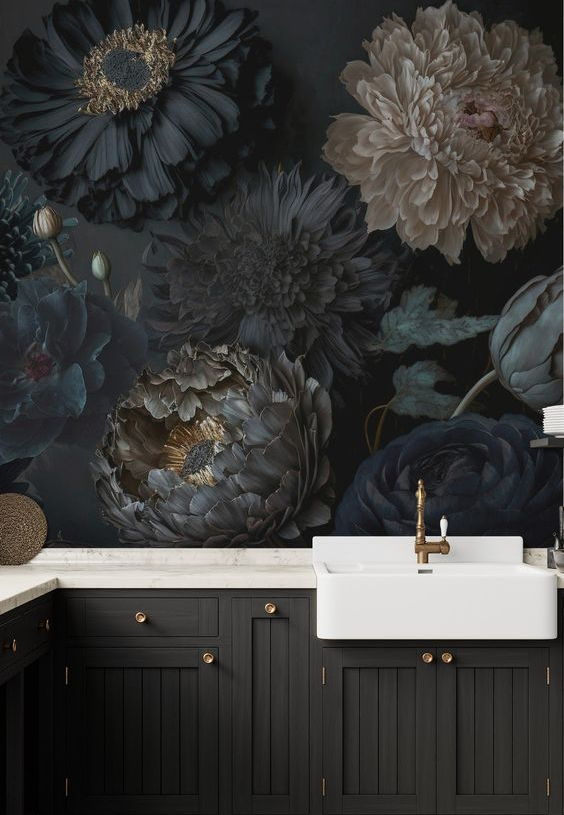
10. Furniture: Striking a Balance
Furniture, featuring wrought iron and carved wood, should strike a balance between traditional Gothic elements and modern pieces. Dramatic light fixtures, such as chandeliers, enhance the ambiance.
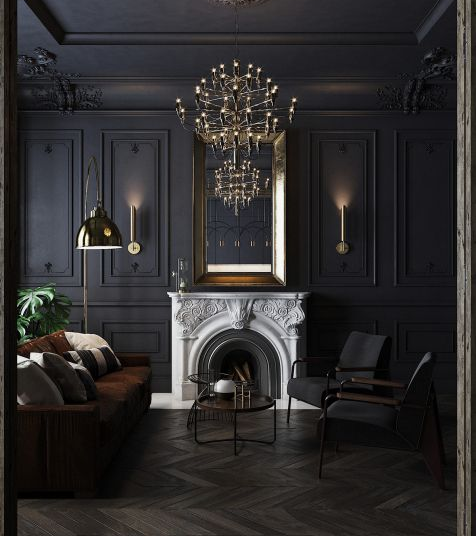
11. Decorative Elements: Ornate Finishing Touches
Add ornate decorations like sculptures, globes, and vases to enhance the Gothic style. Balance rich colors with starker hues for a modern touch. Heavy curtains, wall moldings, and intricate wood carvings contribute to the overall aesthetic.
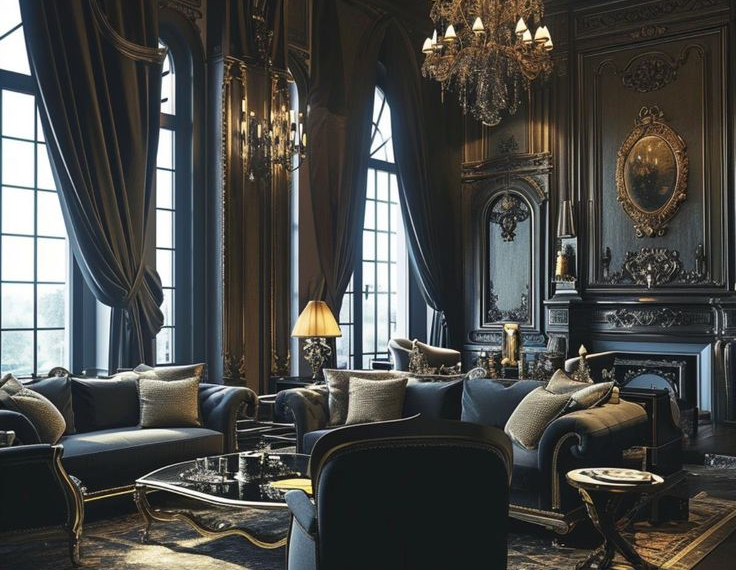
The Perfect Rugs for a Gothic Touch
12. Choosing the Right Rug
Rugs play a pivotal role in Gothic interior design. Antique and vintage oriental rugs, with rich, deep colors and intricate designs, align perfectly with the Victorian Gothic style. For a more contemporary look, opt for modern rugs that match the intricate aesthetic.
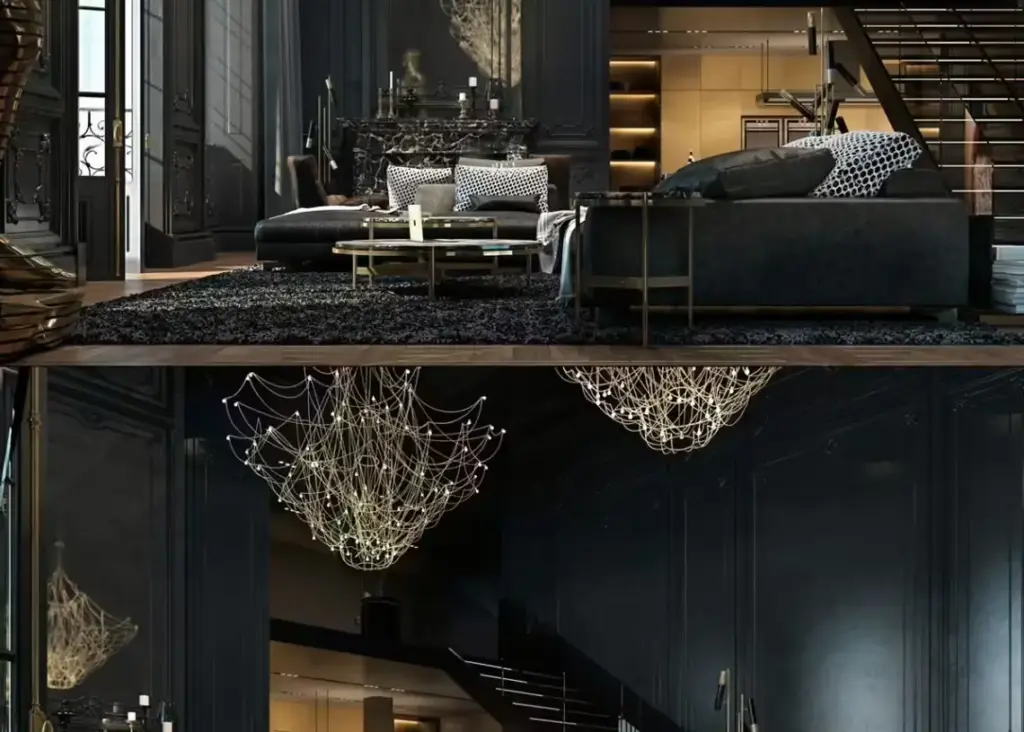
13. Explore the Nazmiyal Collection
Nazmiyal offers a diverse selection of antique, vintage, and modern rugs suitable for various interior design styles, including Gothic. Whether you’re aiming for a faithful recreation of Victorian Gothic style or a more contemporary interpretation, Nazmiyal has the perfect rug for your space.
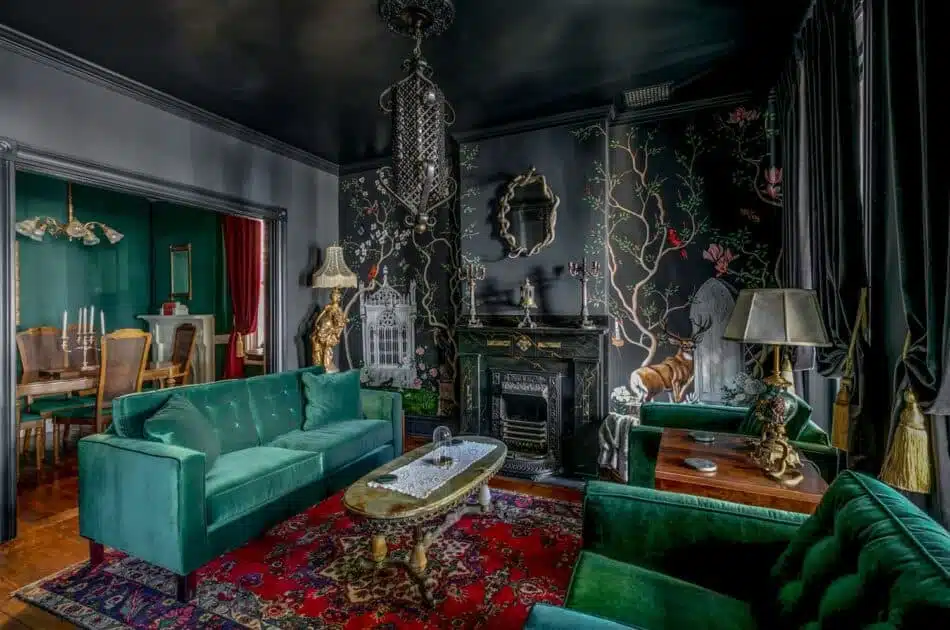
In conclusion, modern gothic interior design is not just a style; it’s an experience-a journey into the shadows where opulence meets mystery. From the enchanting color palette to the choice of furniture, lighting, and textures, every element contributes to a symphony of style that’s both timeless and contemporary.
So, if you’re yearning for a home that reflects your love for the dramatic, the mysterious, and the undeniably chic, consider embracing modern gothic interior design. It’s not about recreating a medieval dungeon but infusing your space with the allure of centuries past, while maintaining the comforts of the present.
Embrace the darkness, fellow design enthusiasts, and let your modern gothic interior be a canvas where history and modernity dance in harmony! Now, armed with the knowledge of modern gothic interior: All You Need To Know, go forth and create a home that whispers tales of the past in the language of the present!
FAQs
What is modern gothic interior design?
Modern Gothic interior design is a contemporary interpretation of the traditional Gothic style that emerged in the medieval period. It incorporates dark and dramatic elements with a mix of modern aesthetics. Characteristics may include bold color contrasts, ornate patterns, Gothic arches, and a fusion of antique and modern furniture.
What is modern Gothic style called?
Modern Gothic style can be referred to by various names, including “Contemporary Gothic,” “Neo-Gothic,” or simply “Modern Gothic.” These terms highlight the blend of historical Gothic elements with contemporary design influences.
How to decorate modern gothic?
To decorate in a modern Gothic style:
- Color Palette: Embrace a dark color scheme with deep purples, blacks, and rich reds. Consider accent colors like gold or silver.
- Furniture: Mix antique Gothic furniture with modern pieces. Look for ornate details, dark woods, and plush fabrics.
- Gothic Archways: Integrate pointed arches in doorways or windows for a Gothic touch.
- Textured Fabrics: Use luxurious and textured fabrics like velvet, damask, or brocade for upholstery and drapery.
- Statement Lighting: Incorporate dramatic chandeliers or sconces with Gothic-inspired designs.
- Art and Decor: Display Gothic art, sculptures, or ornate mirrors to enhance the overall aesthetic.
How would you describe the interior of a Gothic?
The interior of a traditional Gothic space features:
- Gothic Architecture: Pointed arches, ribbed vaults, and flying buttresses.
- Stained Glass Windows: Elaborate and colorful stained glass depicting religious or historical scenes.
- Tall Ceilings: Often with vaulted or cathedral ceilings.
- Ornate Carvings: Intricate detailing on woodwork, furniture, and fixtures.
- Dark Wood: Heavy use of dark wood, such as oak or mahogany.
- Candles and Chandeliers: Warm lighting sources, often in the form of candles or grand chandeliers.
What makes a modern Gothic story?
A modern Gothic story is characterized by elements of mystery, horror, and the supernatural. It often includes atmospheric settings, gloomy landscapes, and intricate plotlines that evoke a sense of unease. Themes may involve the supernatural, psychological suspense, and the macabre, often with a contemporary twist.
What are the characteristics of modern Gothic architecture?
Modern Gothic architecture, in a contemporary context, may include:
- Simplified Forms: Streamlined and simplified interpretations of traditional Gothic architectural elements.
- Use of Technology: Incorporation of modern materials and construction techniques.
- Gothic Revival: A revival of traditional Gothic features like pointed arches, ribbed vaults, and intricate tracery.
- Innovative Design: Experimentation with new forms and styles while maintaining a connection to Gothic aesthetics.
- Sustainability: Integration of sustainable design principles within the context of Gothic architecture.
